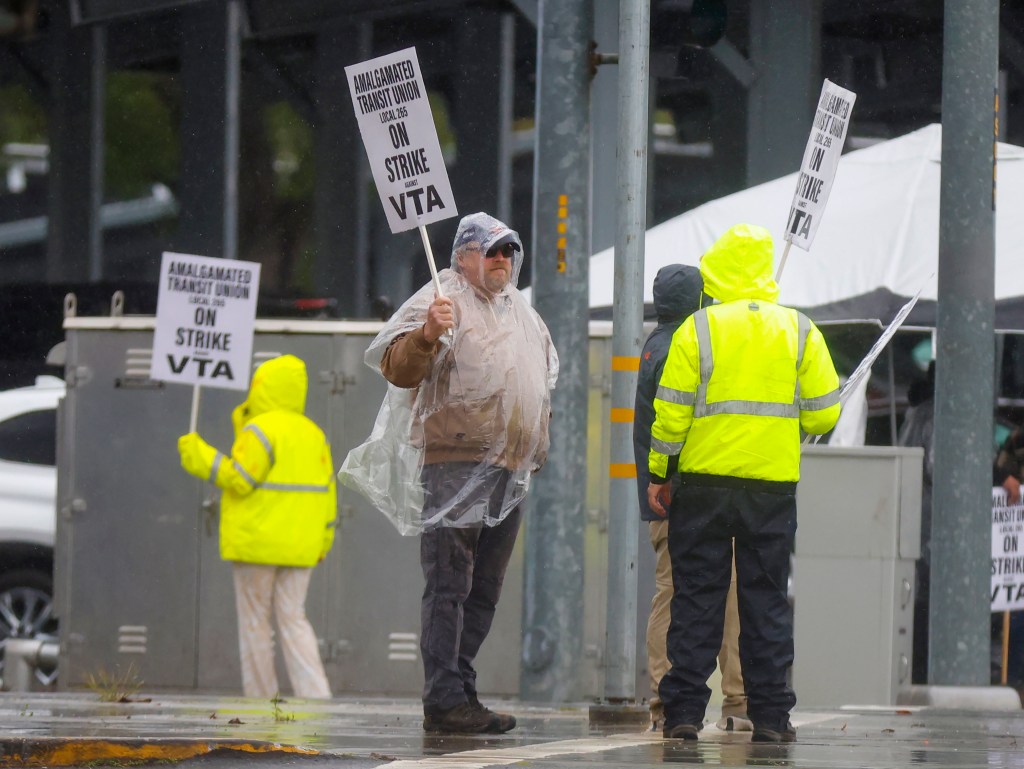Ongoing VTA Strike: Governor Newsom's Role – A Deep Dive into the Negotiations
The ongoing strike by the Amalgamated Transit Union Local 265 (ATU Local 265) affecting the Valley Transportation Authority (VTA) in Santa Clara County, California, has brought public transportation to a standstill and sparked intense debate. While local negotiations have stalled, the role of Governor Gavin Newsom in potentially resolving this critical labor dispute is becoming increasingly significant. This article delves into the current situation, exploring the key issues, the parties involved, and Governor Newsom's potential influence on a resolution.
The Heart of the Matter: Key Issues in the VTA Strike
The VTA strike, impacting thousands of commuters daily, centers on several key issues:
- Wages and Benefits: ATU Local 265 argues that VTA's proposed wage increases and benefit packages fail to adequately address the rising cost of living in Silicon Valley, one of the most expensive regions in the nation. They are seeking a substantial increase to match the compensation offered in comparable transit agencies.
- Working Conditions: Concerns about safety, staffing levels, and overall working conditions are also major points of contention. Union representatives highlight instances of inadequate resources and stressful work environments impacting employee morale and potentially passenger safety.
- Pension and Retirement Security: Retirement benefits, including pension plans and healthcare coverage for retirees, are a significant point of negotiation. The union seeks assurances of a secure retirement for its members after years of service.
The Stalemate and the Need for External Intervention
Negotiations between the VTA and ATU Local 265 have reached an impasse, with both sides seemingly entrenched in their positions. This prolonged stalemate has had devastating effects on the community, disrupting commutes, impacting businesses, and causing significant inconvenience. The urgent need for a resolution has raised calls for higher-level intervention, leading to a focus on Governor Newsom's role.
Governor Newsom's Potential Influence: Mediation and Legislative Action
While Governor Newsom doesn't have direct authority to dictate the terms of the contract between the VTA and the union, his influence can be significant through several avenues:
- Mediation and Facilitation: The Governor's office could play a crucial role in facilitating communication and bringing both parties to the negotiating table for productive discussions. A neutral mediator appointed by the Governor could help bridge the gap and find common ground.
- Legislative Action: While unlikely to be a direct solution, Governor Newsom could explore legislative options to incentivize a resolution. This might involve allocating state funds to improve the VTA's financial capacity to meet some of the union's demands, or enacting legislation to streamline the collective bargaining process for public transit agencies.
- Public Pressure: The Governor's public statements and actions can influence public opinion and put pressure on both the VTA and the union to reach a compromise. A strong public call for a resolution could sway negotiations in a positive direction.
Previous Intervention by the Governor's Office: A Look at Past Labor Disputes
Governor Newsom's office has a track record of intervening in significant labor disputes throughout California. Analyzing past strategies and outcomes in similar situations can provide insights into potential approaches in the VTA case. [Link to an article detailing previous interventions by the Governor’s office].
Looking Ahead: The Path to Resolution
The ongoing VTA strike highlights the complex interplay between labor relations, public services, and the role of state government. While the immediate resolution remains uncertain, the potential involvement of Governor Newsom provides a glimmer of hope for a swift and equitable resolution. The success will hinge on open communication, a willingness to compromise from both parties, and the effective mediation efforts of the Governor's office. The impact of this strike extends far beyond the immediate parties involved, underscoring the crucial need for a timely and effective resolution.
Call to Action: Stay informed about the latest developments in the VTA strike by following reputable news sources and engaging in respectful discussions on social media. Your voice matters in advocating for a fair resolution that benefits both the workers and the community.
